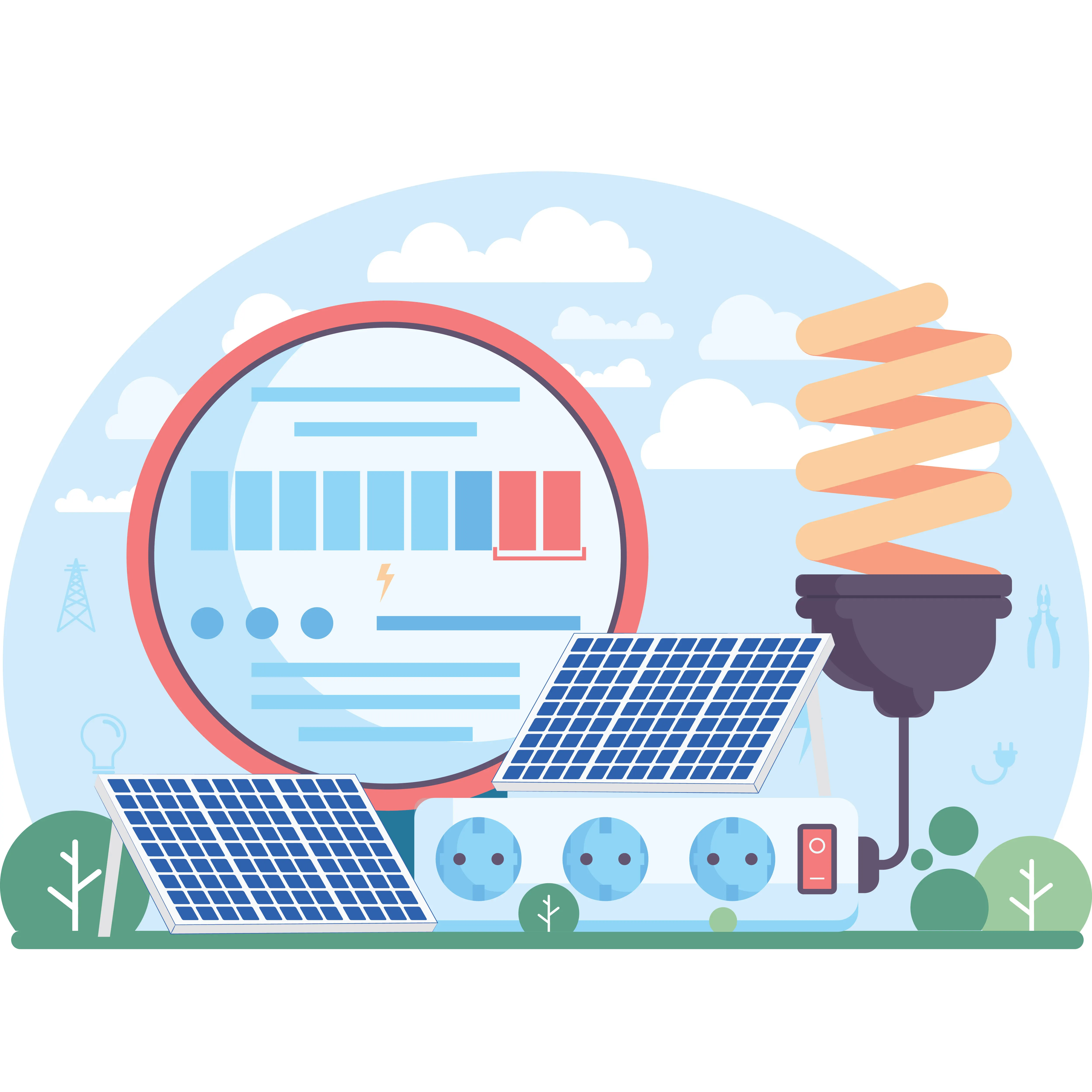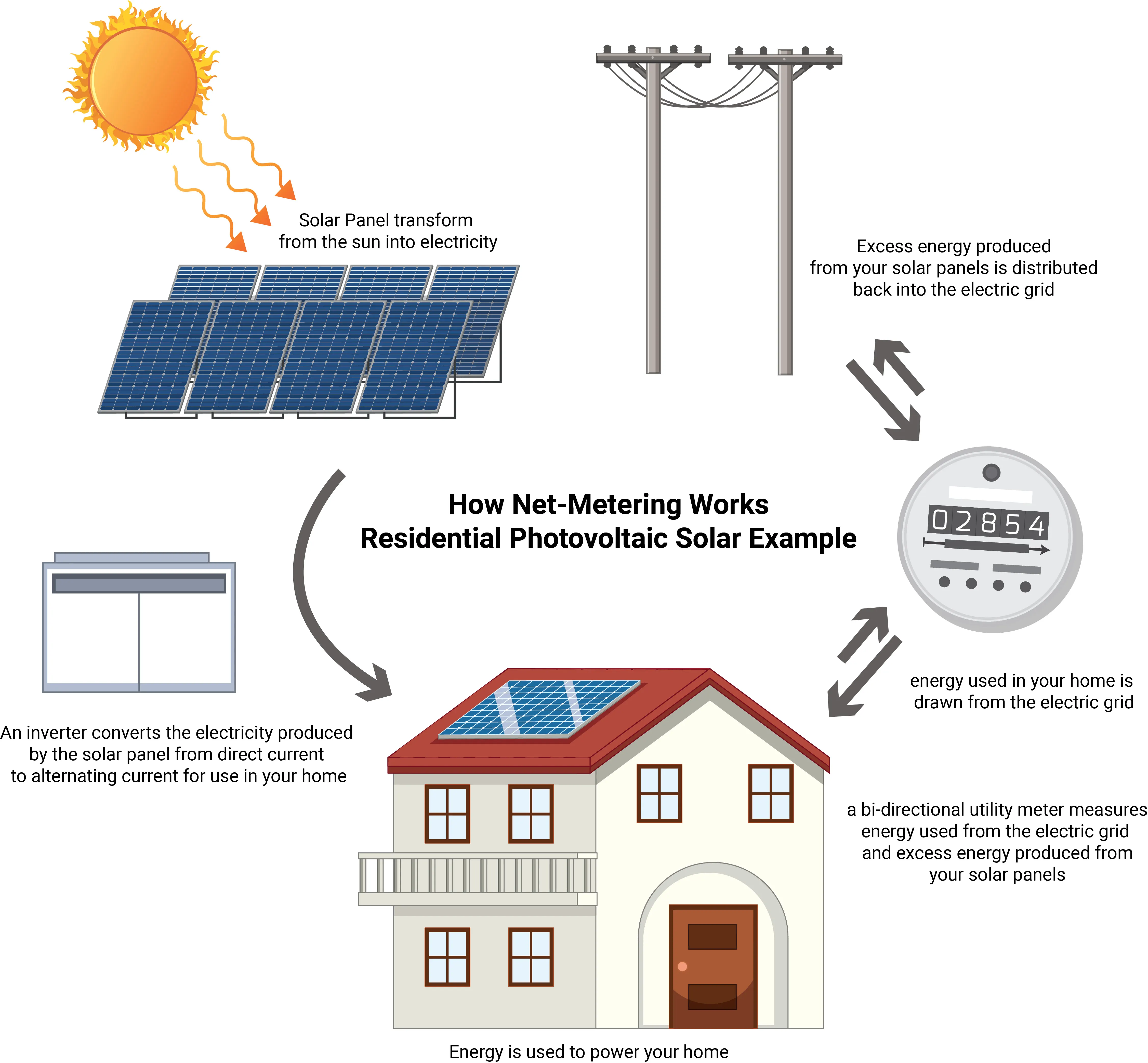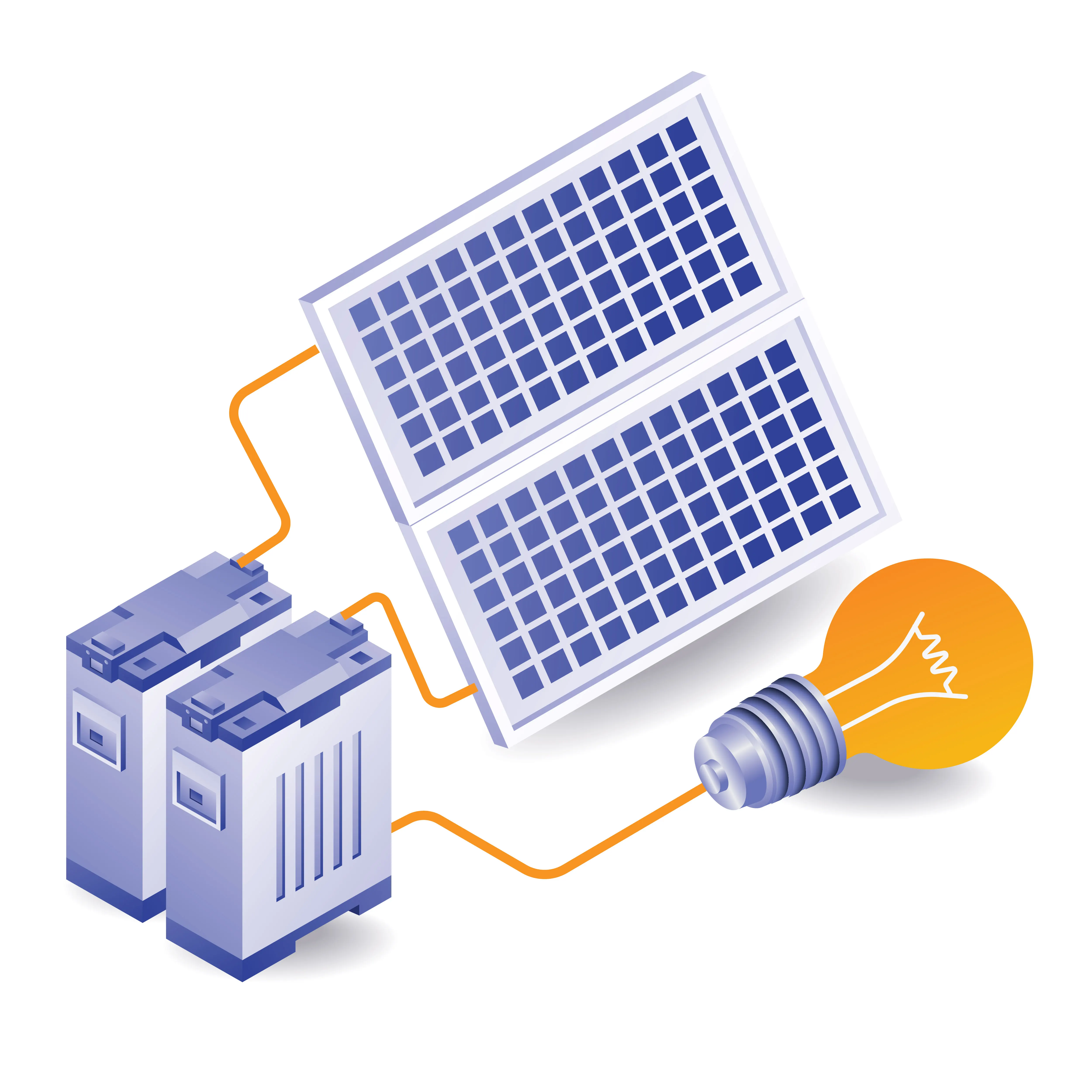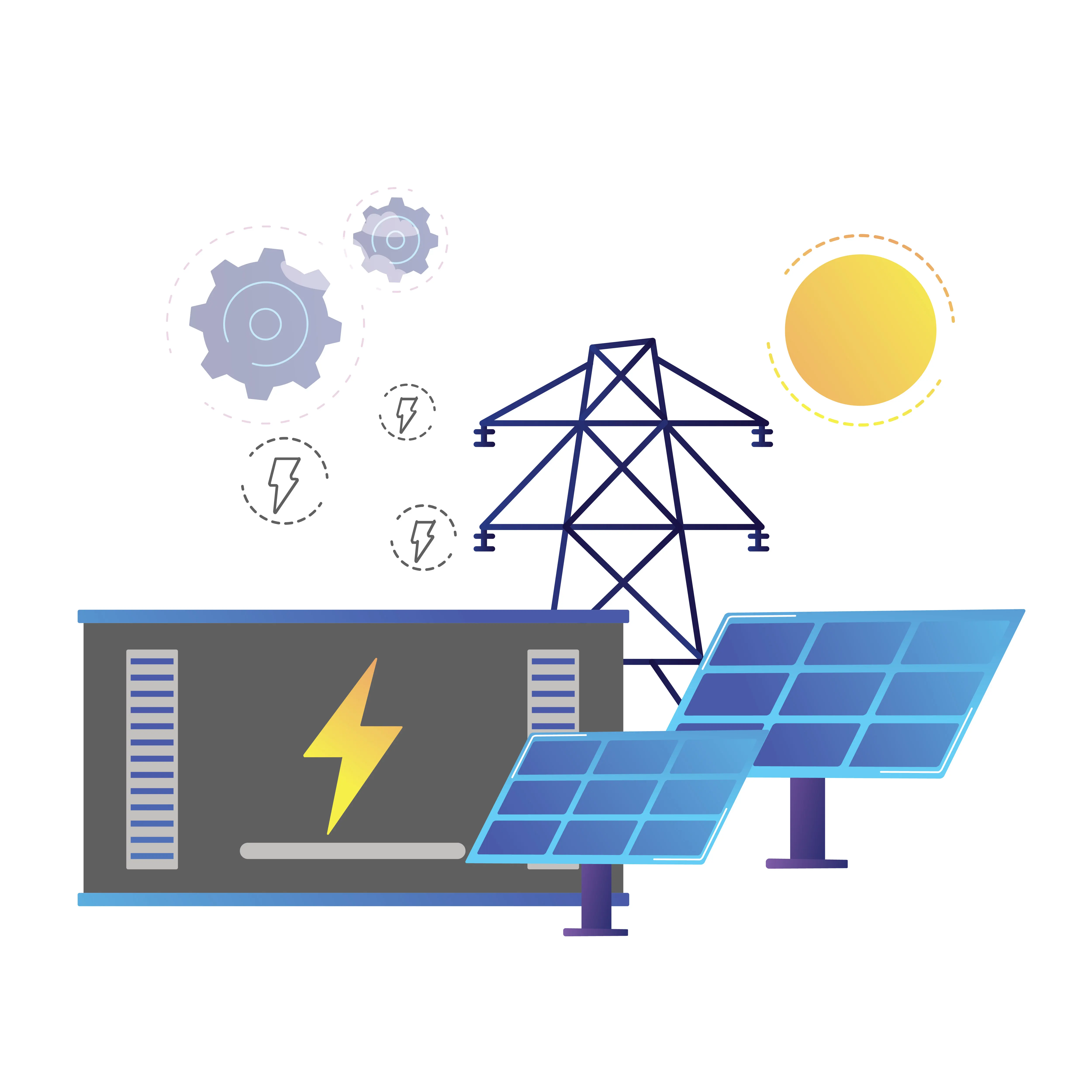Net Metering vs. Batteries: Understanding the Difference
In today's rapidly evolving energy landscape, homeowners and businesses are increasingly turning to renewable energy sources to power their daily lives. Among these sources, solar energy stands out as a popular and viable option. However, when it comes to optimizing the use of solar energy , two primary approaches often come into play: net metering and battery storage. Each has its own set of advantages, limitations, and suitability depending on individual needs and circumstances. This newsletter aims to delve into the intricacies of net metering and battery storage, helping you understand the differences and make an informed decision about which option is right for you.
What is Net Metering?
Net metering is a billing mechanism that allows solar energy system owners to receive credit for the excess electricity they generate and feed back into the grid. Essentially, it enables a two-way flow of electricity: when your solar panels produce more electricity than you need, the surplus is sent to the grid, and your utility company compensates you for it. Conversely, when your system is not producing enough electricity to meet your needs, such as during the night or on cloudy days, you can draw power from the grid, effectively using the credits you’ve accumulated.


How Does Net Metering Actually Work?
Net metering operates through a bi-directional meter that measures both the electricity consumed from the grid and the electricity sent back to it. Here’s a step-by-step breakdown of how it works:
Generation: Solar panels generate electricity during the day when sunlight is available.
Usage: The generated electricity is first used to power your home or business.
Surplus: Any excess electricity is fed back into the grid.
Credit: Your utility company provides credits for the surplus electricity, which can be used to offset future electricity usage.
Draw: During periods when solar panels do not produce enough electricity (e.g., at night), you draw power from the grid using the accumulated credits.
Types of Net Metering:
Net metering policies and programs can vary widely depending on location and utility providers. Here are some common types of net metering:
Standard Net Metering: The most common type, where the utility credits the customer for the excess electricity at the retail rate.
Virtual Net Metering: Allows multiple customers to share the benefits of a single solar energy system, often used in multi-tenant buildings or community solar projects.
Aggregate Net Metering: Enables customers with multiple meters (e.g., a farm with several buildings) to offset the electricity usage on all meters from a single solar energy system.
Feed-in Tariff: Instead of credits, customers receive a fixed payment for the electricity they export to the grid, often at a rate different from the retail rate.
What is Battery Storage?
Battery storage involves the use of batteries to store excess electricity generated by solar panels for later use. Unlike net metering, which relies on the grid to store and retrieve electricity, battery storage provides a self-contained solution, allowing homeowners and businesses to store the energy they produce and use it whenever needed.


How Does Battery Storage Work?
Battery storage systems typically consist of rechargeable batteries, an inverter, and a battery management system. Here’s how they work:
Generation: Solar panels generate electricity during the day.
Storage: Any excess electricity not immediately used is stored in the batteries.
Usage: Stored electricity is used when solar panels are not producing enough power, such as at night or during cloudy periods.
Backup: In the event of a power outage, battery storage systems can provide backup power, ensuring a continuous supply of electricity.
Types of Battery Storage
Battery storage solutions come in various forms, each with unique characteristics suited to different needs:
Lead-Acid Batteries: A traditional and cost-effective option, known for their reliability but with a shorter lifespan and lower efficiency compared to newer technologies.
Lithium-Ion Batteries: Widely used due to their high efficiency, longer lifespan, and compact size, making them ideal for residential and commercial applications.
Flow Batteries: Known for their scalability and long cycle life, making them suitable for large-scale energy storage applications.
Benefits & Limitations of Net Metering & Battery Storage
Net Metering
Benefits:
Cost Savings: Reduces electricity bills by crediting excess solar power.
Simplicity: Easy to implement with existing grid infrastructure.
Scalability: Suitable for both residential and commercial applications.
Limitations:
Grid Dependence: This relies on the availability and stability of the grid.
Policy Variability: Net metering policies can vary widely, affecting financial benefits.
No Backup Power: This does not provide power during grid outages.
Battery Storage
Benefits:
Energy Independence: Reduces reliance on the grid, providing greater control over energy use.
Backup Power: Ensures continuous power supply during outages.
Environmental Impact: Enhances the use of renewable energy , reducing carbon footprint.
Limitations:
Initial Cost: High upfront costs for battery systems.
Maintenance: Requires regular maintenance and potential replacement over time.
Efficiency Losses: Energy losses can occur during storage and retrieval.
Net Metering vs. Battery Storage: How To Choose the Right
Option for You
Choosing between net metering and battery storage depends on various factors, including your energy needs, budget, location, and personal preferences. Here are some considerations to help you decide:
Financial Considerations
Net Metering: Ideal if your primary goal is to reduce electricity bills and you live in an area with favorable net metering policies.
Battery Storage: Better suited if you have a higher budget for initial investment and want to achieve energy independence.
Energy Security
Net Metering: Suitable if you live in an area with a stable and reliable grid.
Battery Storage: Essential if you experience frequent power outages or want an uninterrupted power supply.
Environmental Impact
Net Metering: Contributes to grid stability and reduces overall carbon footprint by feeding excess solar energy back to the grid.
Battery Storage: Maximizes the use of renewable energy on-site and reduces dependency on fossil fuels.
Future-Proofing
Net Metering: Good if your local policies are stable and supportive of renewable energy.
Battery Storage: Offers flexibility and control, making it a forward-looking solution in a changing energy landscape.
Final Thoughts
Both net metering and battery storage offer viable paths to optimizing the use of solar energy, each with its own set of benefits and challenges. Understanding the differences between these two options is crucial in making an informed decision that aligns with your energy goals, financial situation, and environmental values. Whether you choose net metering, battery storage, or a combination of both, investing in solar energy is a step towards a sustainable and resilient future.
For more information on solar energy solutions, including photovoltaic panels, and solar modules, visit PIXON , a leading provider of innovative solar energy products in India. PIXON is dedicated to advancing the adoption of solar energy through high-quality products and exceptional service, making renewable energy accessible to all.